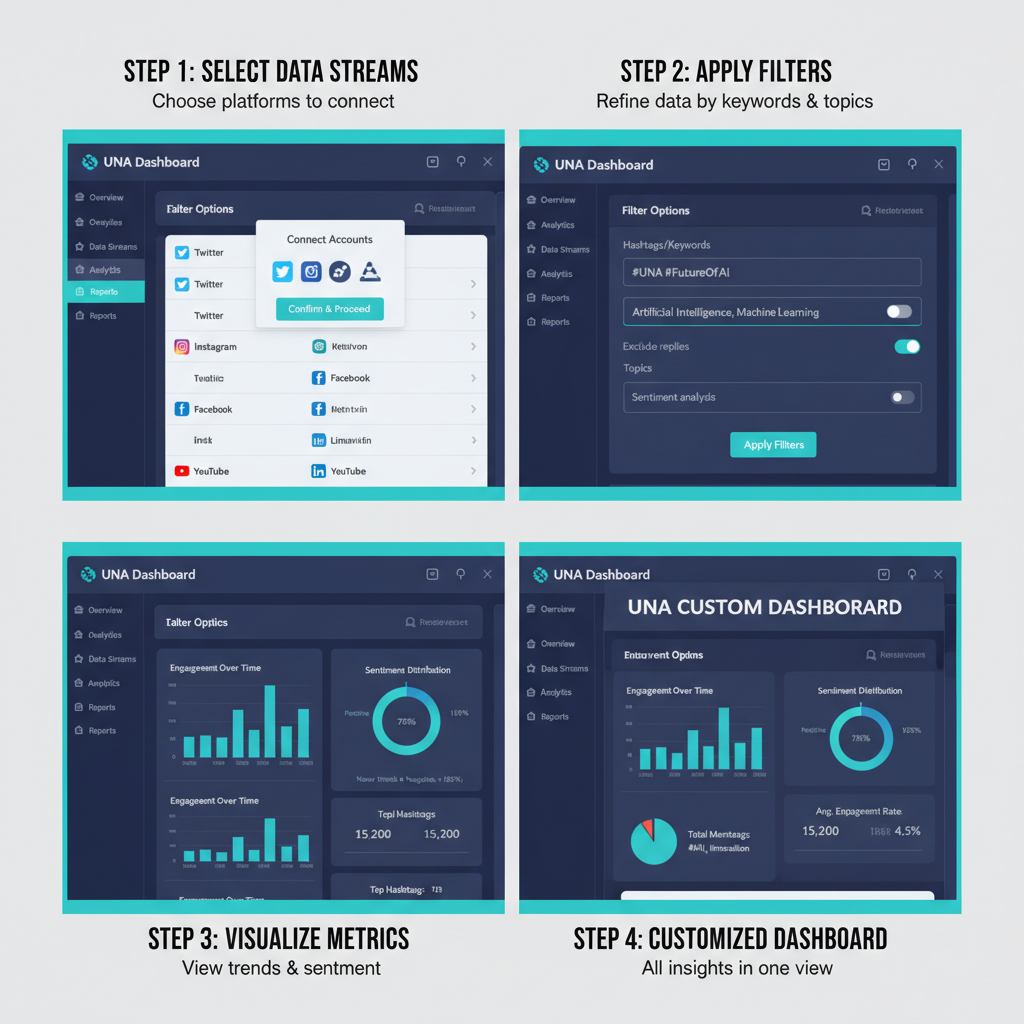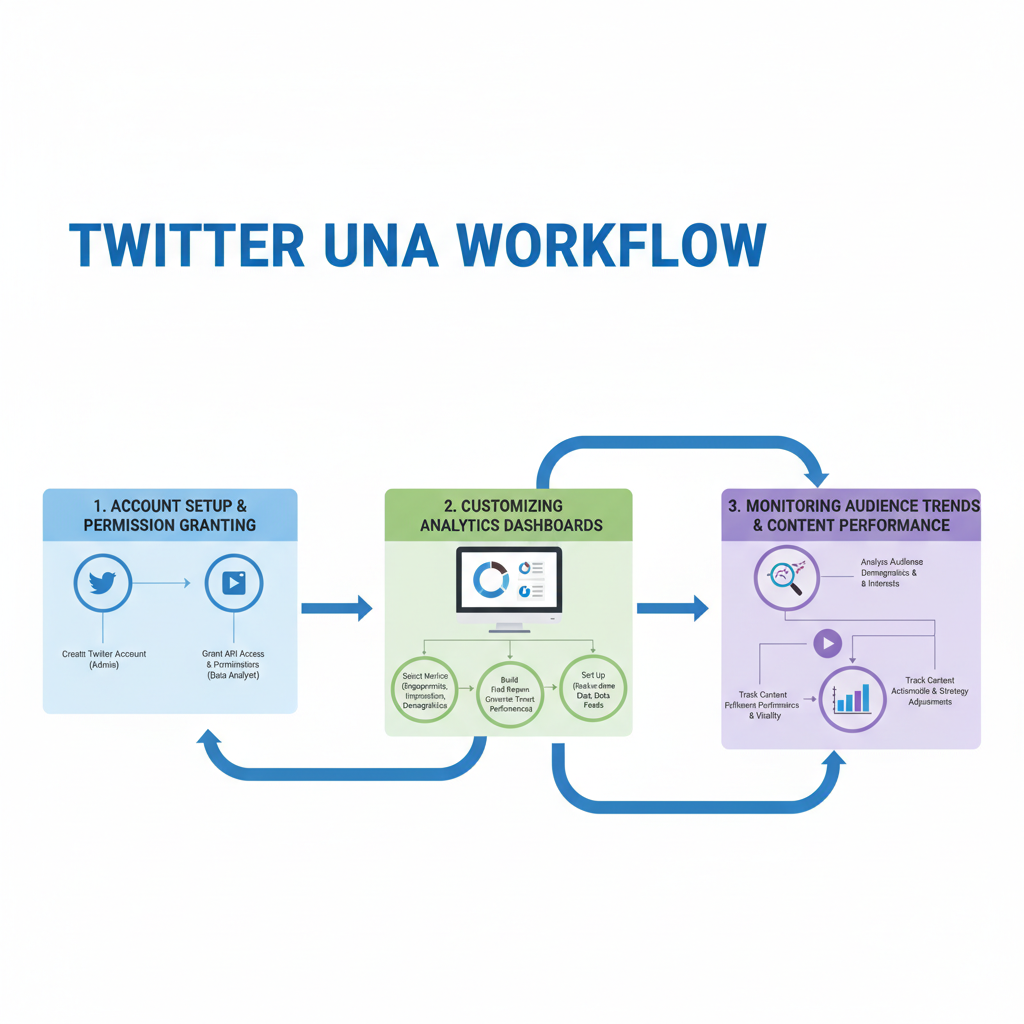Twitter UNA Guide for Community Engagement and Growth
Learn how to use Twitter Unified Network Analytics to boost community engagement, streamline workflows, and drive measurable social media growth.

Introduction to Twitter UNA: Maximizing Unified Network Analytics for Social Growth
Twitter UNA (Unified Network Analytics) is an advanced methodology for organizing, analyzing, and acting on Twitter/X data to strengthen community engagement and accelerate growth. This primary keyword—Twitter UNA—refers not to a single tool but to a coordinated stack of listening streams, analytics dashboards, and workflow automation designed to uncover actionable insights from real-time conversations. Whether using native features like X Pro (formerly TweetDeck), X’s built-in analytics, the public API, or third-party solutions, a UNA provides a unified command center for understanding your audience, directing responsive content, and amplifying successful messaging.
At its core, a Twitter UNA integrates:
- Data ingestion: Tracking keywords, hashtags, Lists, mentions, and competitor activity.
- Categorization: Tagging and segmenting content by topic, intent, or customer journey stage.
- Analytics: Detecting trends, sentiment patterns, share-of-voice changes, and performance metrics.
- Activation: Scheduling content, templating responses, and routing engagement to the right team members.
- Governance: Establishing permissions, audit trails, and compliance safeguards.
For brand leads, creators, and community managers, building a Twitter UNA creates a streamlined, insight-rich environment to foster growth without becoming overwhelmed by constant feed activity.

Benefits of Using Twitter UNA for Businesses, Creators, and Communities
A robust Twitter UNA delivers measurable wins across multiple objectives by consolidating listening, sharpening content decisions, and reducing manual workload—all while maintaining platform compliance.
Key benefits include:
- Consolidated listening: Monitor mentions, keywords, and Lists in one hub to spot trends promptly.
- Faster engagement: Route high-priority mentions to appropriate team members for rapid response.
- Content clarity: Identify which topics, post formats, and hashtags maximize reach and conversation quality.
- Campaign measurement: Compare results across campaigns, timeframes, and target audiences.
- Risk control: Employ role-based permissions, approval flows, and audit logging to safeguard brand voice.
- Scalable operations: Automate tagging, UTM hygiene, and post scheduling to focus on creative tasks.
| Who | Primary Goal | UNA Outcomes | Example KPIs |
|---|---|---|---|
| Businesses | Brand awareness and lead gen | Share-of-voice tracking, crisis alerts, campaign lift | Engagement rate, CTR, lead conversions |
| Creators | Audience growth and monetization | Topic discovery, best-time-to-post, sponsor tagging | Follower growth, watch/expand rate, referral sales |
| Communities | Member activation and retention | Conversation health, onboarding prompts, event amplification | Replies per post, member churn, event RSVPs |
Note: UNA capabilities vary by chosen tools, API tier, and platform updates. Always verify policies before rollout.
Setting Up Your UNA: Account Requirements and Access Permissions
Before designing dashboards, secure the foundational setup:
- Secure your account:
- Enable two-factor authentication for all admins.
- Use shared brand accounts with role-based access—never share passwords.
- Decide on your toolset:
- Native options: X Pro for streams/scheduling, X Analytics for summaries.
- API access for custom dashboards: request correct tier, generate OAuth credentials.
- Third-party platforms: ensure they meet scale, compliance, and export needs.
- Define access permissions:
- Roles: Admin, Publisher, Analyst, Moderator.
- Approval workflows for sensitive posts.
- Restrict visibility on sensitive streams to specific users.
- Connect data sources:
- Authorize the brand account.
- Onboard team members via account or SSO.
- Use secure vaults for API secrets; rotate keys regularly.
Tip: Begin with one listening board, one publishing calendar, and one analytics summary, scaling as adoption grows.
Customizing UNA Streams and Dashboards for Targeted Insights
Tie your streams and dashboards directly to objectives:
Streams to include:
- Brand mentions: names, misspellings, handles.
- Competitors: rival accounts and active hashtags.
- Category topics: market-defining keywords.
- Community watch lists: customers, partners, press.
- Crisis signals: keywords indicating complaints/incidents.
- Regional terms: geo-filtered for local outreach.
Dashboard views:
- Real-time alerts hub.
- Content performance metrics.
- Audience growth and demographics.
- Hashtag/topic mapping.
- Response operations tracking.
Configuration tips:
- Boolean filters to reduce noise.
- Unified tag normalization for clean analytics.
- Volume caps during high-traffic events.
- Consistent naming conventions for tags and campaigns.
Tracking Audience Behavior and Trending Conversations with UNA Analytics
Turn raw data into actionable guidance:
Metrics to track:
- Content performance: engagement rate, bookmark/profile visit ratios, CTR with UTMs.
- Conversation health: replies per post, unique participants, competitor share-of-voice.
- Audience dynamics: follower growth patterns, influencer identification, temporal response trends.

Use the API for extra capabilities like hashtag frequency analysis:
import os, requests, collections
BEARER_TOKEN = os.getenv("X_BEARER_TOKEN") # Store securely
def search_recent(query, max_results=50):
url = "https://api.twitter.com/2/tweets/search/recent"
params = {
"query": query,
"max_results": max_results,
"tweet.fields": "entities,public_metrics,created_at,lang"
}
headers = {"Authorization": f"Bearer {BEARER_TOKEN}"}
r = requests.get(url, params=params, headers=headers, timeout=20)
r.raise_for_status()
return r.json().get("data", [])
def top_hashtags(tweets, min_len=2):
counter = collections.Counter()
for t in tweets:
tags = t.get("entities", {}).get("hashtags", []) or []
for tag in tags:
tag_text = tag.get("tag", "").lower()
if len(tag_text) >= min_len:
counter[tag_text] += 1
return counter.most_common(10)
if __name__ == "__main__":
tweets = search_recent('(“customer support” OR “help needed”) lang:en -is:retweet')
print(top_hashtags(tweets))Layer on:
- Sentiment proxies.
- Cohort segmentation.
- Trend detection with anomaly alerts.
Creating Content Strategies Based on UNA Data (Timing, Hashtags, Topics)
Implement a perpetual feedback cycle:
- Timing: Derive optimal posting windows from historical data; adapt for multi-time zones.
- Topics/formats: Align core themes with audience interests; balance short updates, polls, threads.
- Hashtags: Use 1–3 relevant tags; track performance to adjust.
- CTAs: Prompt lightweight engagement; track responses via UTMs.
- Iteration: Conduct monthly retros to refine content planning.
Pro tip: Sync content clusters with launches, events, or rituals for predictable engagement peaks.
Scaling Engagement Through UNA’s Automation and Scheduling Tools
Automate repetitive tasks while preserving authentic interaction:
- Scheduling: Batch evergreen posts; approvals for sensitive content.
- Smart tagging: Auto-assign content to analytics segments.
- Alerts: Trigger notifications for spikes or VIP engagement.
- Templates: Maintain editable response libraries.
- Compliance: Follow automation rules, set safe posting hours.
Example rule configuration:
rules:
- name: route_support_mentions
when: mention.text matches "(refund|billing|account|help)"
do:
- tag: "support"
- assign_to: "support_queue"
- alert: "on_call_support"
- name: label_campaign_posts
when: post.text contains "#LaunchDay"
do:
- tag: "campaign:launch-q4"
- append_utm:
source: "twitter"
medium: "organic"
campaign: "launch-q4"
scheduling:
timezone: "UTC"
windows:
- days: [Mon, Tue, Wed, Thu]
start: "09:00"
end: "17:00"
- days: [Fri]
start: "09:00"
end: "15:00"Best Practices for Ethical and Effective UNA Usage (Avoid Spam, Respect Privacy)
Keep trust central to UNA operations:
- Follow automation and anti-spam guidelines.
- Safeguard personal data; limit raw data access.
- Comply with laws such as GDPR/CCPA.
- Label sponsored or partnered content transparently.
- Maintain human oversight for sensitive cases.
- Ensure accessibility in content formatting.
Ethics align with sustainable growth and brand safety.
Integrating UNA Data with Other Marketing Tools for Unified Reporting
Maximize output by linking your UNA to the wider marketing tech stack:
- BI tools: Export and visualize metrics in Looker, Power BI, Tableau.
- Web/product analytics: Consistent UTMs into GA4 or product dashboards.
- CRM/helpdesk: Route social leads and support cases with correct tagging.
- CDP: Segment audiences for targeted messaging.

| Integration | Purpose | Key Data Fields | Notes |
|---|---|---|---|
| Data Warehouse | Historical analysis and modeling | post_id, timestamp, tags, impressions, engagements, clicks | Batch daily exports to control API usage |
| Web Analytics (GA4) | Attribution and funnel analysis | utm_source, utm_medium, utm_campaign, session_id | Enforce consistent UTMs via automation |
| Helpdesk | Customer support routing | mention_id, user_handle, priority_tag, transcript | Set SLAs and feedback loops |
| CRM | Lead management | campaign_tag, contact_id (if opted-in), touchpoints | Only sync consented data |
Case Studies: Success Stories of Organizations Using Twitter UNA
Three anonymized examples demonstrate UNA’s impact:
- SaaS brand: Streamlined listening; reduced reply time 68%, elevated CSAT by 22%.
- Creator collective: Coordinated scheduling; tripled weekly followers, 45% boost in thread completions.
- Local nonprofit: Geo-targeted promotions; increased RSVPs 54%, doubled replies.
Consistent configuration and respectful engagement drive these results.
Future of Twitter UNA and Upcoming Features to Watch
Emerging trends for UNA include:
- Real-time conversation summarization.
- Enhanced thematic clustering.
- Predictive scheduling recommendations.
- Built-in safety and compliance controls.
- Cross-platform orchestration.
- Stronger privacy governance.
Expect UNA to evolve into an intelligent co-pilot for social strategy.
Conclusion: Optimizing Your Social Strategy with UNA Insights
Twitter UNA consolidates listening, analytics, and activation into a coherent approach that supports smarter, faster decisions about content, engagement, and investment. Start small—focused streams, shared calendars, and a basic report—then iterate and integrate. Keeping ethics front and center ensures long-term community trust.
Ready to enhance your Twitter/X presence? Begin building your Twitter UNA today to turn live conversations into sustainable community growth, and scale your social impact without sacrificing authenticity.


